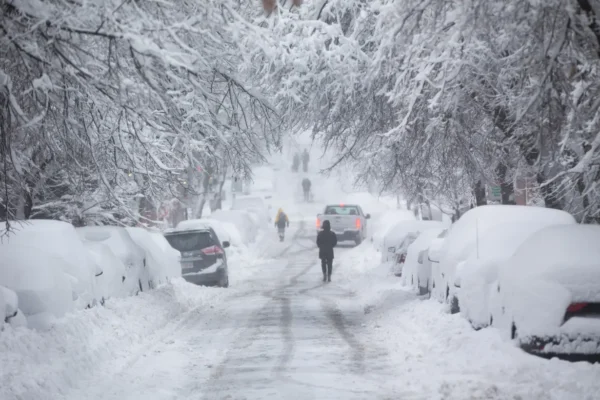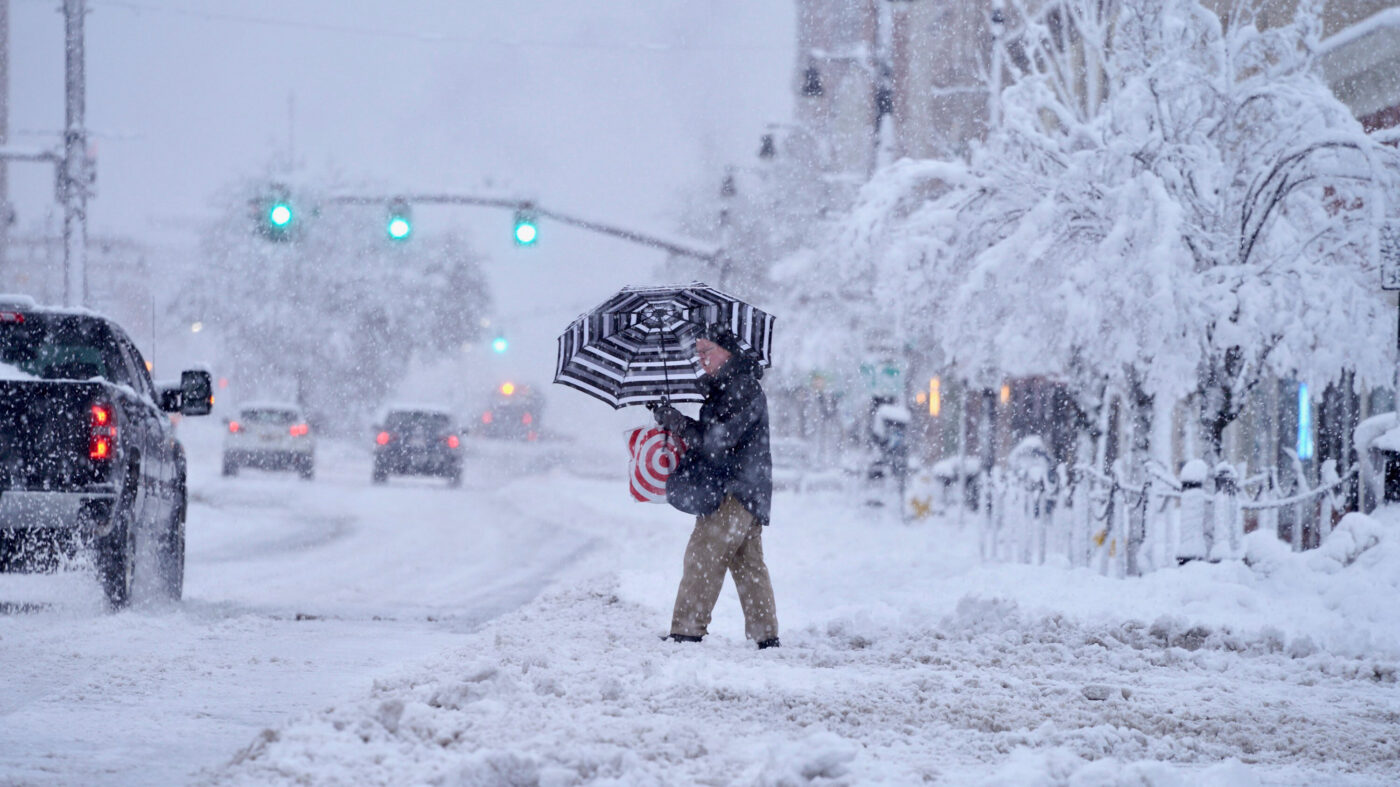When winter arrives, it brings with it the beauty of snow-covered landscapes and the joy of seasonal festivities. However, it also comes with its own set of challenges, including snowstorms that can pose significant dangers. Understanding how to stay safe in a snowstorm is crucial for anyone living in or traveling to areas prone to these winter events. This article will delve into various aspects of snowstorm safety, from preparation to recovery.

Preparing for a Snowstorm
Preparation is the key to ensuring your safety during a snowstorm. Knowing what to do ahead of time can make all the difference in keeping you and your loved ones safe and secure.
Building an Emergency Kit
An emergency kit is an essential component of your snowstorm preparedness strategy. It is important to gather supplies that can sustain you during a power outage or if you get stuck at home without access to stores or emergency services.
Start by including basic necessities such as water, non-perishable food items, and necessary medications. Consider adding warm blankets, flashlights, batteries, and a first-aid kit. In addition, don’t forget to stock up on personal hygiene items, such as soap and sanitary products, along with tools like a multi-tool or a can opener.
Having a battery-operated radio can also be beneficial for staying updated on weather reports and emergency announcements. This equipment allows you to receive critical alerts even if the power goes out. A well-prepared emergency kit ensures that you have everything you need to ride out the storm safely.
Planning Your Travel Routes
If you need to travel during winter months, especially when snowstorms are predicted, planning your routes ahead of time is vital. Keep an eye on weather forecasts and understand the local geography of the area to determine which roads are likely to be safer.
Always opt for main highways rather than back roads, as they tend to be cleared more quickly after snowfall. Familiarize yourself with local shelters and rest stops should you find yourself stranded. It’s also beneficial to inform someone about your travel plans and expected arrival time so that they can alert authorities if you don’t arrive as scheduled.

Staying Informed About Weather Conditions
Being aware of weather conditions is essential for staying safe in a snowstorm. Utilize various resources like weather apps, television broadcasts, and social media to get real-time updates about incoming storms. Pay attention to alerts issued by local authorities regarding road closures or emergency measures.
Understanding the severity of the snowstorm can help you make informed decisions. If warnings indicate that conditions will be life-threatening, it may be wise to stay indoors rather than attempting to drive. Making proactive choices based on reliable information can drastically improve your chances of remaining safe throughout the storm.
During a Snowstorm
Once a snowstorm hits, knowing how to respond can protect you and your loved ones. Here are some strategies to implement while the storm rages outside.
Staying Indoors: The First Line of Defense
Whenever possible, staying indoors is the best way to avoid the dangers posed by snowstorms. Home is typically the safest place, provided you’ve adequately prepared beforehand.
Create a cozy environment by turning on heaters or lighting a fire if you have a fireplace, but always ensure proper ventilation to avoid carbon monoxide buildup. Monitor indoor temperatures to prevent hypothermia, and use heavy curtains to keep the warmth from escaping.
Use this time to engage in activities that bring comfort and distraction. Whether it’s reading, playing board games, or enjoying quality time with family, staying occupied can help reduce anxiety and boredom while the storm passes.
Managing Power Outages
Snowstorms often lead to power outages, which can exacerbate the danger of being stuck indoors. Having a plan in place for dealing with power loss is crucial.
Using battery-powered lights and candles can provide illumination, but always exercise caution to prevent fire hazards. Have a backup heat source ready, such as a propane heater or electric blankets, ensuring that you follow safety guidelines for their usage.
Stocking up on extra blankets and layers of clothing can help keep you warm if the heat fails. Additionally, consider maintaining a supply of charged portable chargers for mobile devices to remain connected to the outside world.
Avoiding Dangerous Situations
During a snowstorm, it’s essential to avoid risky behaviors that could compromise your safety. If you must venture outdoors, wear appropriate clothing, including insulated boots, thermal gloves, and layered clothing to protect against the cold.
Keep an eye out for falling branches or other debris that might be dislodged due to the weight of the snow. It’s also crucial to avoid overexertion while shoveling snow or engaging in outdoor activities. Hypothermia or frostbite can occur unexpectedly, especially if you become too cold or wet.
After the Snowstorm
The end of a snowstorm does not mean the immediate return to normalcy; there are still several precautions to take to ensure your continued safety.
Assessing Damage and Hazards
After a snowstorm, assessing any damage caused by the weather is vital before venturing outside. Look out for downed power lines, damaged trees, and broken branches that may have fallen during the storm.
If you can see hazardous areas from inside your home, avoid approaching them until authorities have assessed the situation. Additionally, watch for warning signs of potential structural damage to your house, such as cracks or sagging roofs under the weight of accumulated snow.
Take pictures of any damage for insurance purposes, and report it to the relevant authorities promptly. Prioritize your safety when evaluating the condition of your property, as unexpected risks may still exist.
Clearing Snow Safely
Clearing snow from your driveway and walkways is important to maintain accessibility, but it’s essential to do it safely. Always start by clearing smaller amounts of snow at a time to avoid physical strain. Use proper lifting techniques when shoveling to prevent injury, and take regular breaks to hydrate and rest.
Wear appropriate footwear with good traction to prevent slipping on ice and pack down paths as you clear. If snow removal becomes overwhelming, consider hiring professionals or enlisting the help of neighbors who may have the equipment and expertise to handle large accumulations.
Monitoring Weather Patterns
Even after a snowstorm passes, continue to monitor weather patterns and forecasts. Winter can be unpredictable, and additional storms may be on the horizon. Being aware can help you prepare again if another wave of severe weather approaches.
Stay connected with community resources and share information with neighbors about upcoming weather conditions. Collaboration within your community can strengthen your overall resilience to future storms and enhance your emergency preparedness efforts.

FAQs
What should I do if I’m caught in a snowstorm while driving?
If you find yourself stuck during a snowstorm, stay with your vehicle. Keep the engine running periodically for heat but ensure the exhaust pipe is clear of snow to prevent carbon monoxide poisoning. Signal for help using hazard lights or a cloth tied to the antenna, and conserve fuel by limiting idling time.
How can I ensure my home is ready for winter storms?
To ensure your home is prepared for winter storms, insulate pipes to prevent freezing, seal drafts around windows and doors, and ensure that your heating system is functioning correctly. Stock up on supplies such as food, water, and medications to last several days during potential power outages.
What signs indicate I may have hypothermia?
Signs of hypothermia include excessive shivering, confusion, drowsiness, slurred speech, and weak pulse. If you or someone else exhibits these symptoms, seek warmth immediately and call for medical assistance.
How can I help neighbors affected by a snowstorm?
Helping neighbors can involve checking on elderly or vulnerable individuals, offering to shovel walkways, or sharing necessary resources like food and warmth. Small acts of kindness can go a long way in building community resilience during harsh weather conditions.
Are pets safe during a snowstorm?
Pets can be at risk during snowstorms if left outside for extended periods. Ensure that pets have shelter to escape the cold, and consider bringing them indoors during storms. Provide sufficient food, water, and warmth, and keep their routines consistent to reduce stress.
Conclusion
In conclusion, understanding how to stay safe in a snowstorm is essential knowledge for anyone living in regions susceptible to winter weather. From thorough preparation and creating an emergency kit to responding effectively during the storm and assessing damage afterward, each step plays a vital role in ensuring safety. By following the outlined tips and maintaining awareness of changing conditions, you can navigate the challenges of snowstorms with confidence, minimizing risks to both yourself and your community. Remember, winter weather can be beautiful, but respecting its power is key to staying safe.

